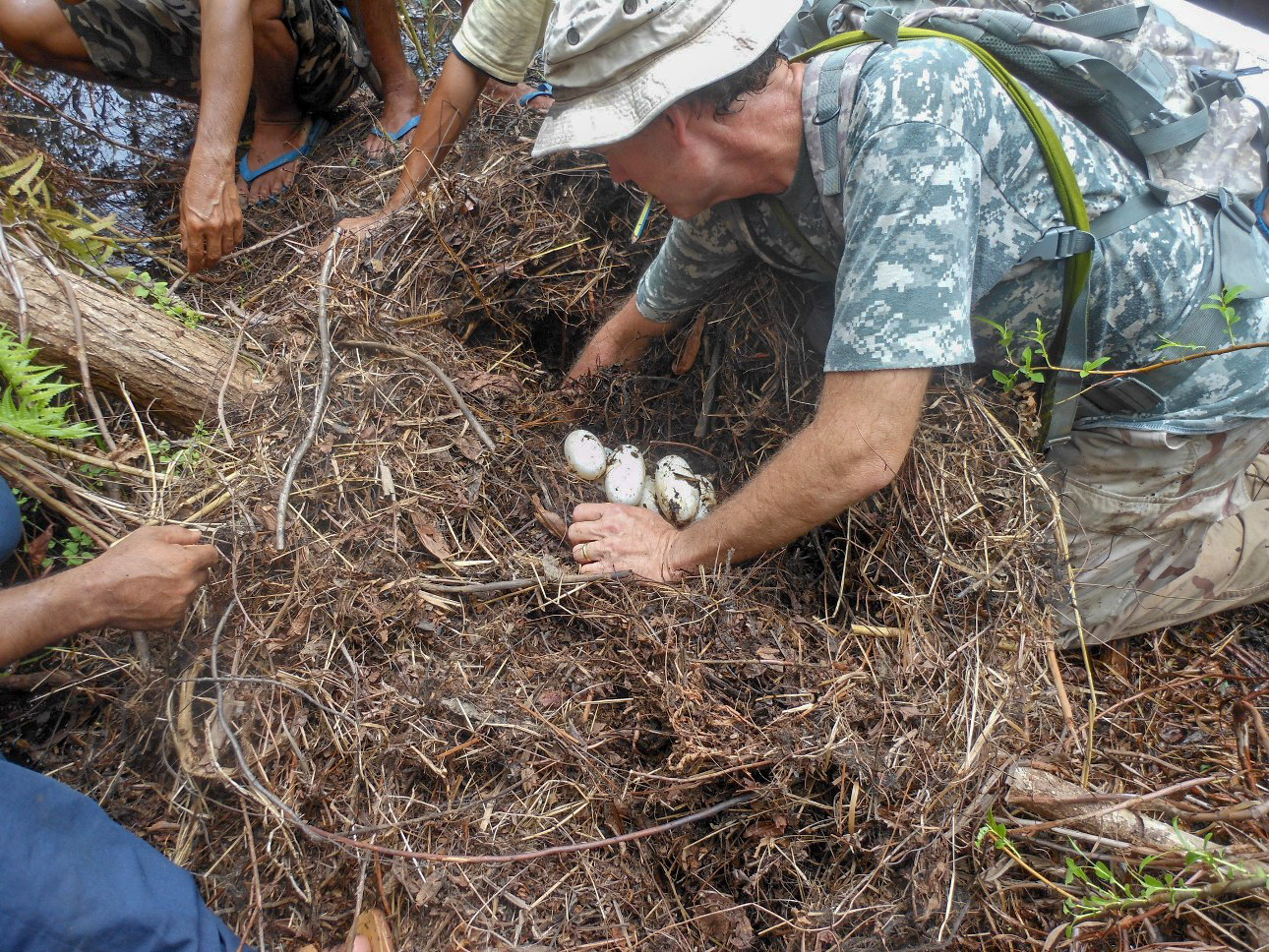The Siamese Crocodile Crocodylus siamensis once occurred throughout Southeast Asia and Borneo but populations have declined during the past 50 years. With <1,000 individuals remaining in the wild, the species is ranked as Critically Endangered by IUCN.
Remnant populations still occur in Laos and wild population recovery is prioritized by the IUCN/SSC Crocodile Specialist Group.
Historically, this species was broadly distributed in freshwater habitats of Southeast Asia, from Thailand, Lao PDR, Vietnam and Cambodia to Indonesia, but at present only very small, highly fragmented populations survive. In Lao PDR, the species has been documented in recent years from four southern provinces. The largest relicts occur in Savannakhet and Attapeu Provinces and rival those in Cambodia as the largest in the species’ severely depleted historical range.
The majority of Lao PDR’s crocodiles thrive in the Xe Champhone Wetlands, which is one of two Ramsar sites in the country. Wetland conservation for crocodiles protects many other species of fauna and flora and serves as an important natural sink of carbon (in the wetland and peatland). Protection of this carbon sink contributes to mitigation of global climate change, by preventing the emission of greenhouse gases.
Conservation Challenges
Habitat at most crocodile sites is seriously threatened by:
- seasonal pumping of water for rice irrigation,
- overfishing,
- removal of aquatic vegetation, and
- isolation caused by intensive agriculture in peripheral wetlands.
The fragmented distribution of crocodile habitat presents a formidable barrier to crocodile movement and interaction. Infertile nests and apparent lack of juveniles at some sites suggest that reproductive problems also impede population viability.
Conservation Approach

From 2008-2015, WCS initiated a program including:
- participatory land-use planning,
- establishment of village crocodile conservation committees (VCCCs) to lead village-based protection of wetlands, and
- feasibility of community-based tourism focusing on crocodile protection.
By designating core crocodile conservation areas within the Ramsar site, progress was made towards halting the decline of Siamese Crocodiles in Laos.
Seven villages participated in the pilot project and remain active.
Government commitment to develop a Ramsar site management plan will consider an integrated approach to conservation and expansion to include additional suitable crocodile habitat.
Surveys in 2018 strongly suggest crocodile populations are increasing as the result of:
- release of head-started juveniles in 2013-14, and
- continued recruitment from small adult population.